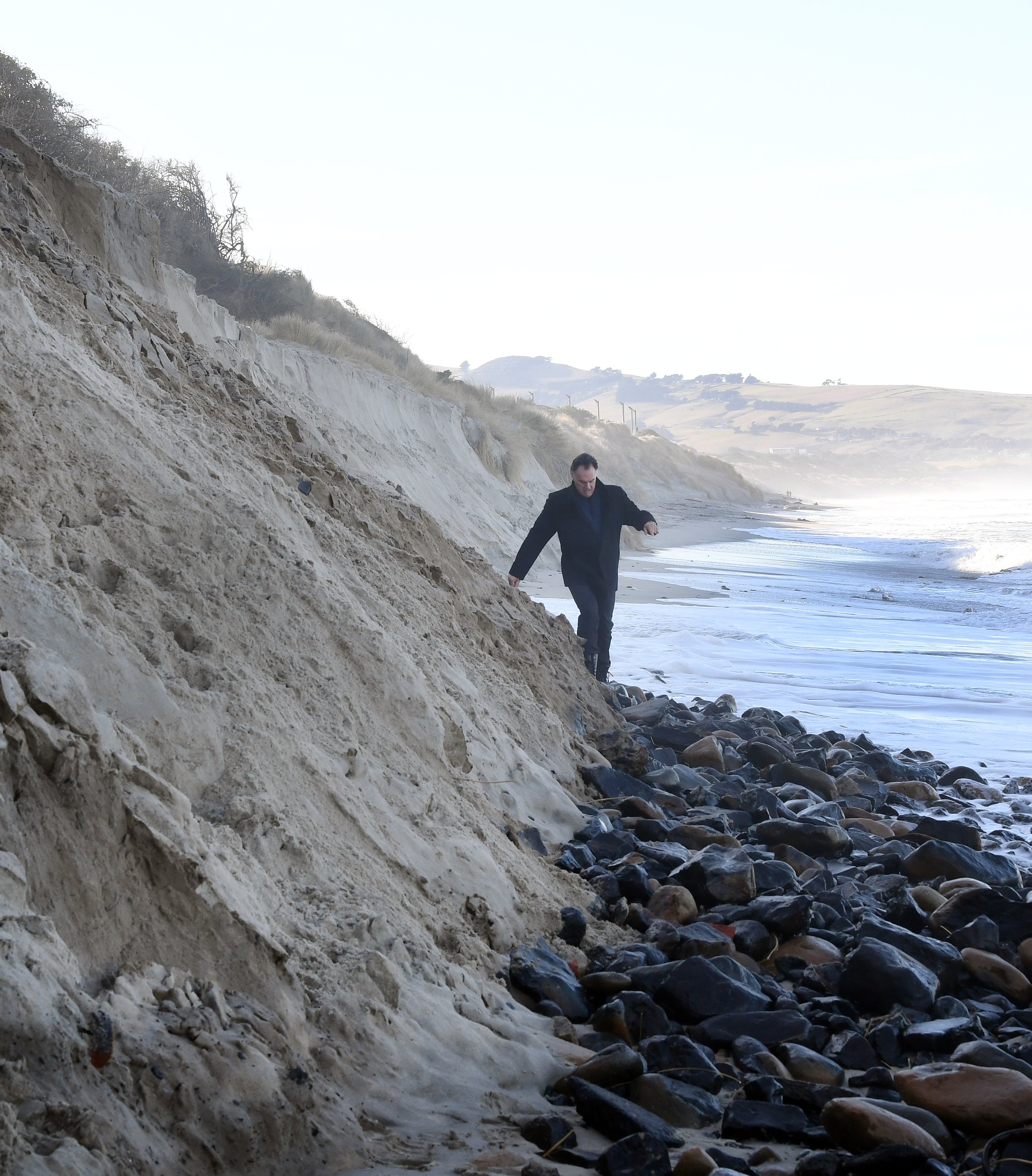Rock mattresses in rectangular mesh cages, sandbags, and other various items have been exposed on parts of the beach after a large amount of sand was stripped from north of the sand sausages at the end of the St Clair sea wall.

The work also involved the removal of loose plastics from geobags in the area, Mr Simons-Smith said.
Any significant debris would be removed, he said.
Further preventive measures were not required at this stage.
The council had options, including adding sand and other temporary protection measures if necessary, he said.
It was drafting the St Clair-St Kilda coastal plan which would result in further work to monitor the coast and assess management options.
Physical works to help manage the dune at Middle Beach were also planned over the coming three years.
However, there was no intention in the near term to extend sand sausages to other parts of the coast, he said.
Dunedin city councillor Jules Radich has campaigned for a reinstatement of the St Clair poles as an erosion protection measure.
Yesterday, he said the erosion was worrying.
The dunes were now steeply undercut and posed a danger to beachgoers who might suffer a serious fall, he said.
Vegetation was already being lost to the sea as the dunes collapsed, Cr Radich said.
"This is only to be expected because we have done nothing to put more sand on the beach and to build up protection," he said.
"It’s a really simple thing. If we’re going to have walls — if we’re going to have an Esplanade sea wall along the front of the beach — then we need to have either a groyne or a breakwater to protect it."
He said a petition with about 2500 signatories showed there was a public appetite to try repairing the poles, which could be a "very simple, very inexpensive" remedy.
But he believed there was "a bit of political resistance" to repairing the groyne, despite the poles being a well-known landmark in the city.
Comments
In climate change, weather is not 'typical'.
That foreshore has been reclaimed, if you look at early photos of the area there is a nice sweep to the dunes that follow the way the waves roll along the length of the beach. If we let the ocean recreate that sweep there will be a short balance between land and sea, but eventually the sea will erode the foreshore irrespective of climate change.
It may be in your world but where the human race lives the weather is "typical"....
The DCC continues to have it's head in the sand over this issue. Although I was hesitant initially to the prospect of more groynes, Cr Radich had put forth some pretty compelling evidence based on a study over many decades the does indeed show the dramatic impact the groynes in this location have on reinstating the beach and helping to protect the dunes. Lets not forget, there is an old dump in those dunes, and the DCC just sits on it's hands. Personally, I would like to see a combination of groynes and Akmons placed stratigically along the shore. Cr Radich had put in a proposal to spend $120k to reinstate the groynes. I feel that is a very small price to do a lot of good. A lot more productive than some of the projects we've seen! St Claie beach is iconic and a assest to the community and city as a whole. A lot more sensible effort should be placed on protecting it.
Aren't the Groynes worth a crack, regardless? Worst case scenario it doesn't fix the problem, but we reinstate what must be one of the most recognisable iconic Dunedin features. Best case we achieve both. Not sure what the cost involved is, but it must surely be a fraction of what the unused central city cycle lanes have cost.











